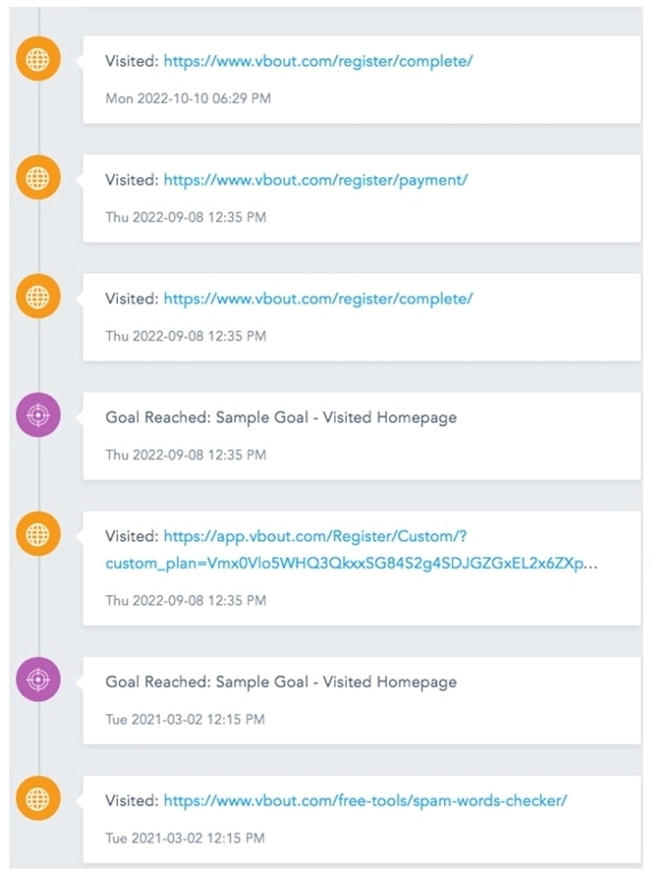Content marketing is invaluable for communicating with customers and providing them with consistent value.
It's one of the most important elements of your marketing strategy for creating brand awareness, generating leads, nurturing them throughout the funnel, converting them into customers, and retaining your loyal clients.
But the question is, How do you monitor and track your content marketing performance?
To discover whether your content marketing is successful and to what extent your established goals have been met, you need to identify the key performance indicators of your content marketing.
KPIs allow you to measure the performance of your efforts and decide what needs to be improved.
The following are nine KPIs you need to monitor.
1. Number of Visitors
Although the number of visitors is a quantitative measure and doesn't ultimately tell whether the content you're creating is productive or not, it gives you an indication that the sources you're relying on to get visitors to your blog are working for you.
For instance, you can identify what proportion of them are coming organically via Google search, social media, online review websites, paid ads, email marketing, public relations, etc., and decide in which channels to invest more heavily.
2. Average Session Duration
The time spent on a page reveals whether your leads are really enjoying your content or not. The longer they stay, the better. If they stay for only a few seconds, your content might not be resonating with them or solving their problems, or there might be other reasons, such long page-load speed or poor user experience.
3. Bounce Rate
If some of your content pages have a high bounce rate—i.e., a significant amount of your leads leave immediately after landing on them—that indicates you have a problem. The reasons could be the same as those stated in the average session duration, or you might have been pursuing the wrong target audience.
Observe the bounce rate across all devices (PC, mobile, tablet). If it's high on PC but low on mobile and tablet, it could indicate that you have website-responsiveness issues that need to be fixed.
4. Brand Awareness
Content marketing is not only about measuring the aforementioned metrics related to a video, blog post, podcast, or infographic but also about observing how they are performing across different distribution channels.
Social media is one of these channels, in the form of likes, comments, shares, and the traffic that the content shared across the social networks is driving to your website.
5. Session-to-Contact Rate
This metric determines how much of your organic traffic is leading to conversions. It's calculated by dividing the number of new contacts generated by the total website sessions over a specific period (monthly/periodically/yearly). If the rate is satisfactory, it means that your leads are happy and engaging with your content and don't have any problem opting into your forms and providing their contact information.
It's important to note that the purpose of acquiring contacts here doesn't just mean signing up for your product or service but could also be other requests, such as downloading a free e-book or guide, joining your webinars, or booking a demo or consultation.
6. Conversions
Conversion goals may vary depending on the stages of your customer's journey that your leads are currently in (top, middle, or bottom of the funnel).
- If TOFU is your target, your conversion goal might be clicks within your articles, an e-book or a whitepaper download, a webinar signup, etc.
- If MOFU is your target, your conversion goal would be a demo-call booking, attending a webinar or Q&A session, etc.
- If BOFU is your target, your conversion goal is likely to be demo-call booking, product purchase, or free-trial signups.
To identify your top-performing content, you can use Google Analytics' or any similar tool's tracking parameters, such as UTM, which allow you to determine the content pages that are converting your leads into customers.
7. Length of Sales Cycle
Measuring how long it takes for leads to convert into customers after interacting with your content is crucial, particularly for leads in the middle or bottom of the sales funnel, as it helps assess the effectiveness of your content and the speed of conversion.
If leads aren't converting as quickly as anticipated or are bouncing off, it may indicate several potential issues:
- Navigation problems: Your pages might have navigational elements that slow down the conversion process or cause visitors to leave.
- Load time: The page might take too long to load, which can deter potential customers.
- Unclear CTAs: The call-to-action (CTA) buttons might not be clear or compelling enough.
- Content gaps: There could be a lack of essential content, or the provided information might not meet the visitors' expectations.
- Conversion barriers: Consider whether it would be beneficial to introduce a subscription form popup or a clickthrough button directing users to another landing page where they can sign up for your product or service.

8. Loyalty/Retention
To determine how loyal your customers are to the content (and by extension your brand) you're producing for them, you need to check how your email marketing channel is working.
Also, for every campaign you send, whether email, SMS, or Web push, you must measure the open rate, clickthrough rate, read rate, conversion rate, unsubscribe rate, and spam complaints.
The lower the opt-out rate for those campaigns, the more likely that your customers are satisfied with your content marketing and are loyal to your brand.

9. SEO Performance
Content's main role is to offer value to your target audience but also to outrank your competitors in search results pages.
Google ranks content based on E-A-T signals—Expertise-Authority-Trust. It's not only about including keywords related to the search queries that your target audience is likely to search for to find your business; it's about whether the content answers all your target audience's needs, fulfills their expectations, and removes all their doubts or hesitations.
If your website or a page ranks in the top 10 search results, your content marketing strategy is on the right track. There are SEO tools, such as Ahrefs and Semrush, that show Domain Authority Score; a high DA score (>70/100) means that your website is credible and a large number of high-quality websites are linking to your content.
* * *
Measuring your content marketing performance is critical to your success. Despite the great effort spent to create your content marketing materials, the absence of evaluation leaves you blind, unable to identify what needs to be tweaked in the future.
There are actionable metrics that must be tracked. Although such metrics as conversions and retention are the most important to track, "vanity" metrics such as content engagement across social and email, bounce rate, sessions, and average session duration are crucial to determining whether your content pages are working fine before delving deeper into the actionable KPIs.
More Resources on Content Marketing Metrics
Is Your Content Marketing a Failure? These Five Metrics Can Tell You




